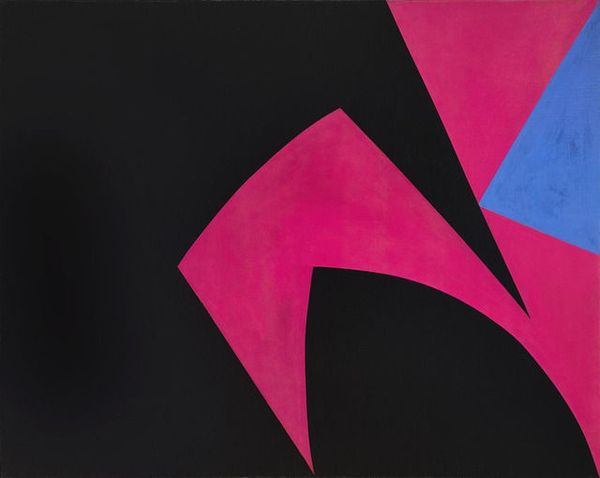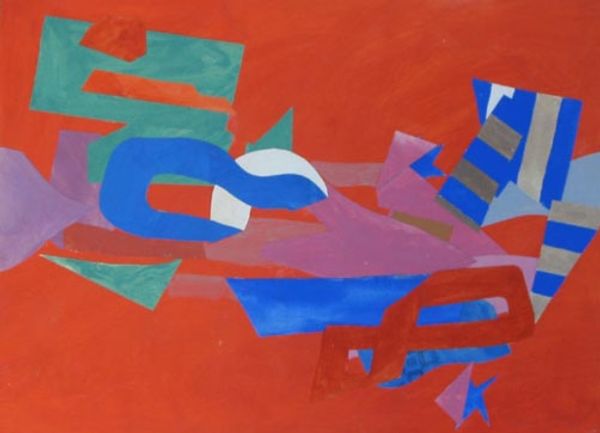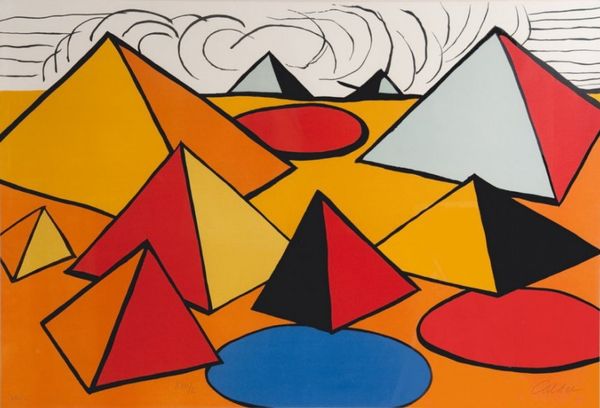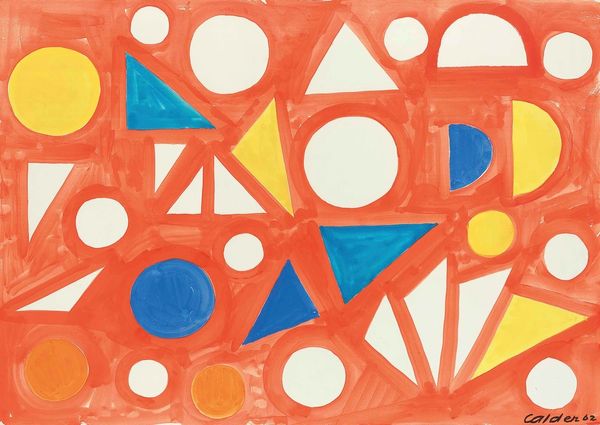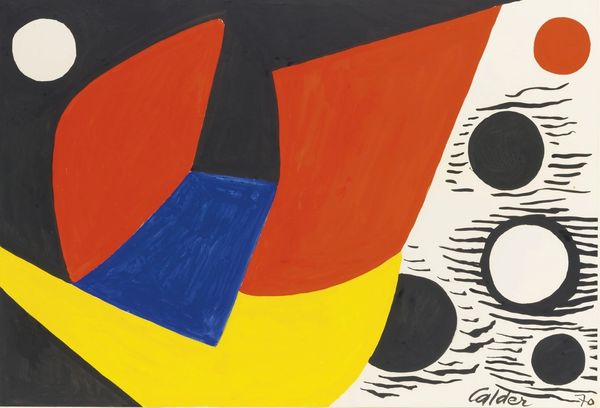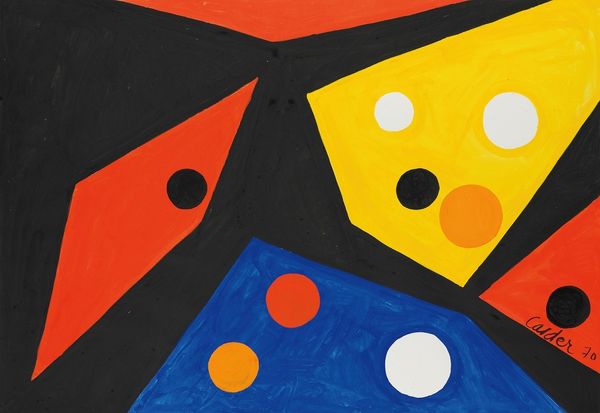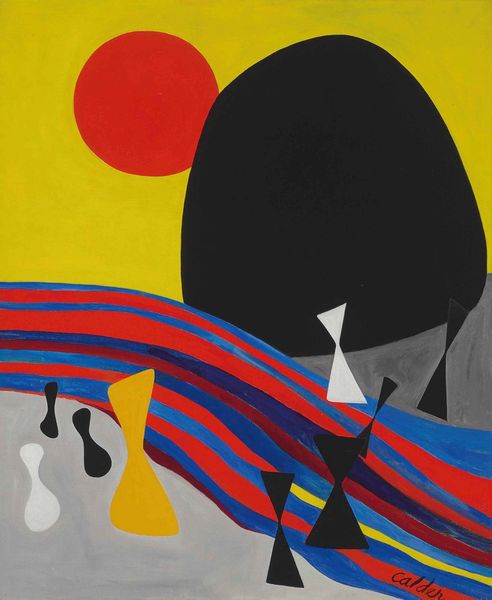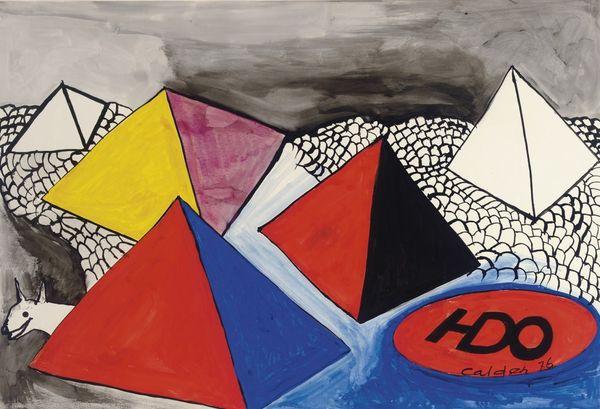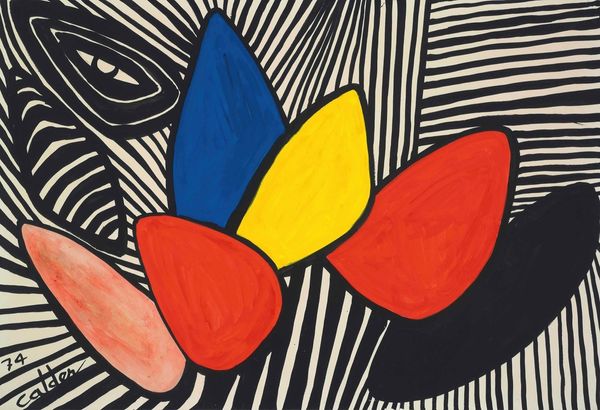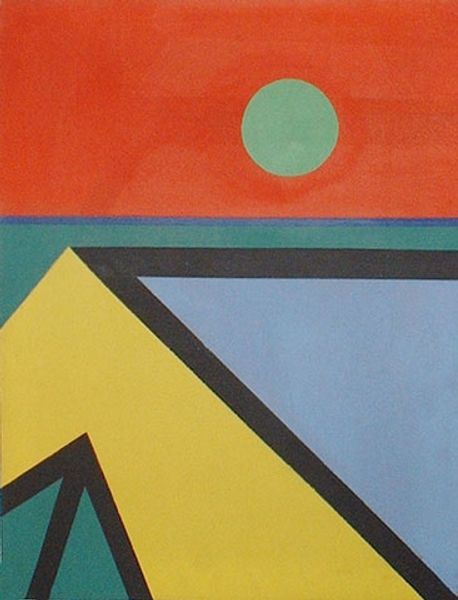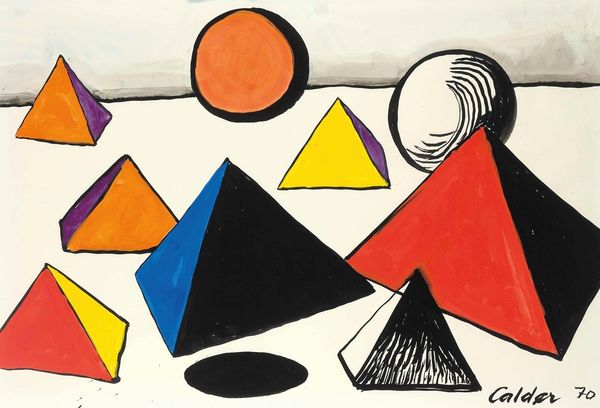
painting, acrylic-paint
#
abstract-expressionism
#
abstract painting
#
painting
#
pop art
#
acrylic-paint
#
abstract
#
form
#
acrylic on canvas
#
geometric-abstraction
#
line
#
modernism
Copyright: Modern Artists: Artvee
Curator: Looking at "Kites" painted by Alexander Calder in 1945, I immediately notice its unexpected geometry playing against what might typically be considered organic forms. The bold planes of colour seem to depict a landscape but are intersected by these sharply angled "kites." It’s quite jarring, in an intriguing way. What do you make of it? Editor: Well, I find myself contemplating the socioeconomic implications of Calder choosing this particular medium and composition, particularly when viewed through the lens of post-war art production. We have to acknowledge that resources were being allocated towards war efforts, so art supplies would have been affected by material constraints. It makes me wonder: what type of paints, or support did he use here, given its probable lack of access during that time? How did resource scarcity shape abstraction itself? Curator: The work utilizes acrylic paint, seemingly applied somewhat hastily onto what appears to be a basic canvas, or at least not an expensive or high quality one. The flatness speaks volumes about access to resources, it challenges our typical expectation for high-end finishes on paintings that is normally tied with market values, or the fetish for traditional oil painting during that time, for example. Editor: Right. But look closer; beyond just the materials themselves, consider that the composition seems to deliberately dismantle conventional notions of aerial enjoyment—flight, leisure, childlike whimsy. These dark, aggressive geometric shapes disrupt the saccharine quality evoked by the pink sky. How complicit might this abstraction be in portraying themes of unrest within a global context as people fought for their freedom and basic human rights during World War II? Curator: An interesting point. Could these “kites” signify disruption and violence given the social context? Perhaps they represent some attempt by the artist to break down conventional forms of representation. This painting also has an abstract style of what might appear to be the sea, or some terrain below, with some dark colours juxtaposed. How might this relate with what you were mentioning earlier? Editor: I would say that this use of geometric abstraction, set against the backdrop of a world embroiled in conflict, is anything but innocuous. In contrast, what some might consider ‘primitive’ forms become powerful visual metaphors that embody societal fracture; I see Calder making his statement about the way in which production and consumerism are related with world events. Curator: In considering the use of specific and perhaps even cheap material and the implications around social injustice and violence— it shows how the physical aspects of the creative act can in fact deeply connect to our collective historical and societal challenges, providing tangible avenues for discussion. Editor: Indeed, bringing material considerations alongside an interrogation into social context enriches our appreciation of "Kites," allowing a far greater, more meaningful connection that goes beyond simple aesthetics.
Comments
No comments
Be the first to comment and join the conversation on the ultimate creative platform.

